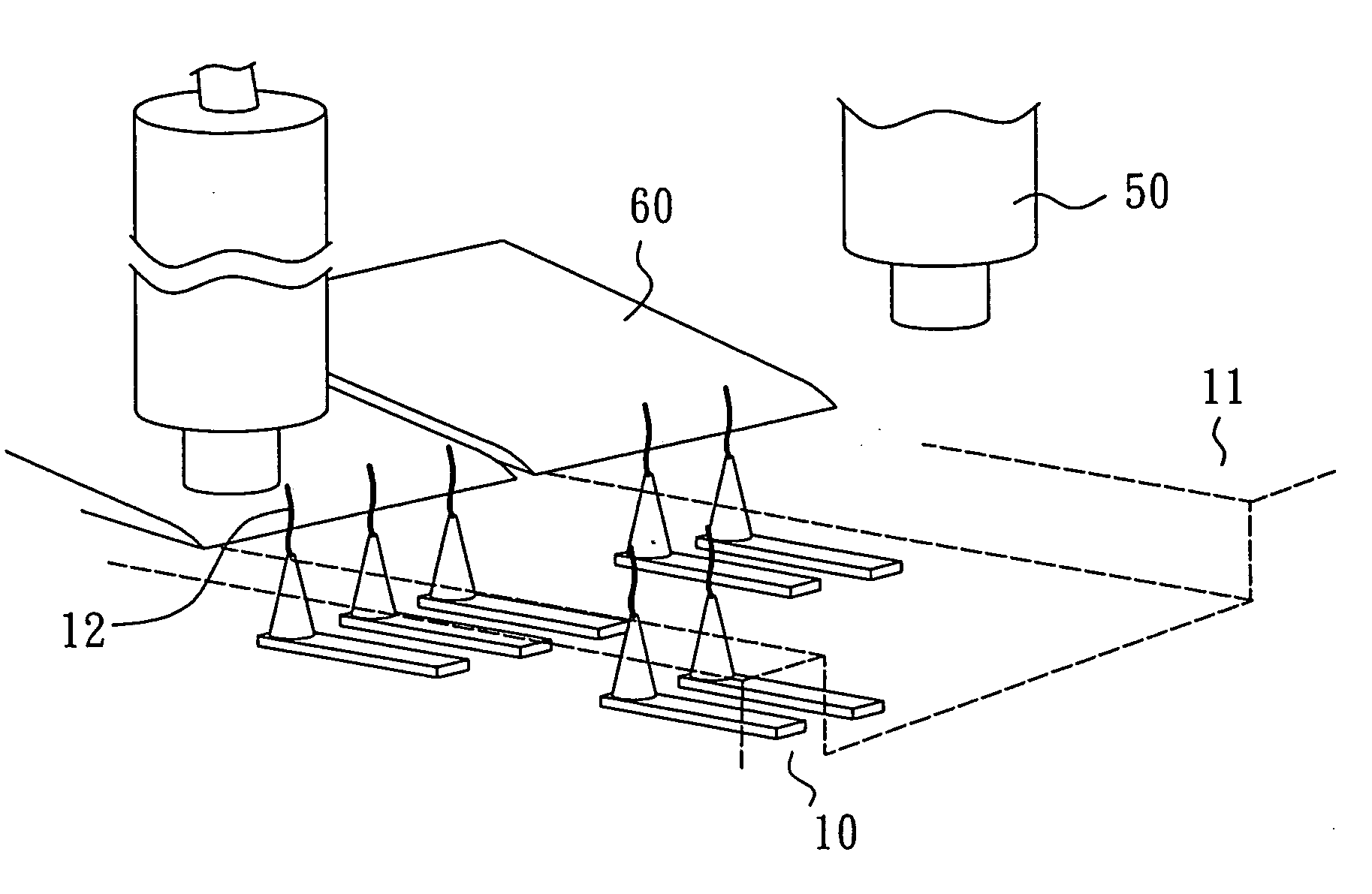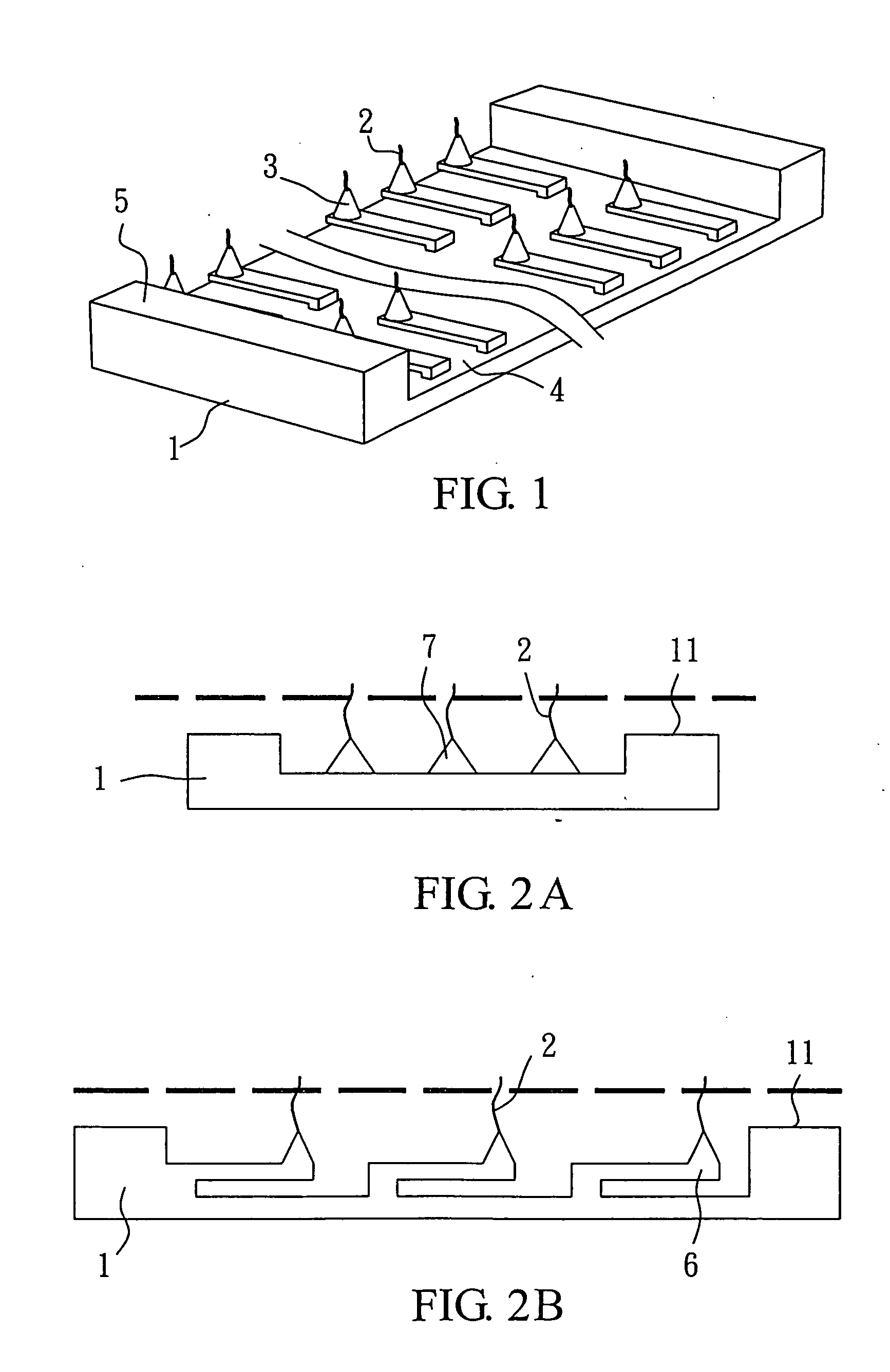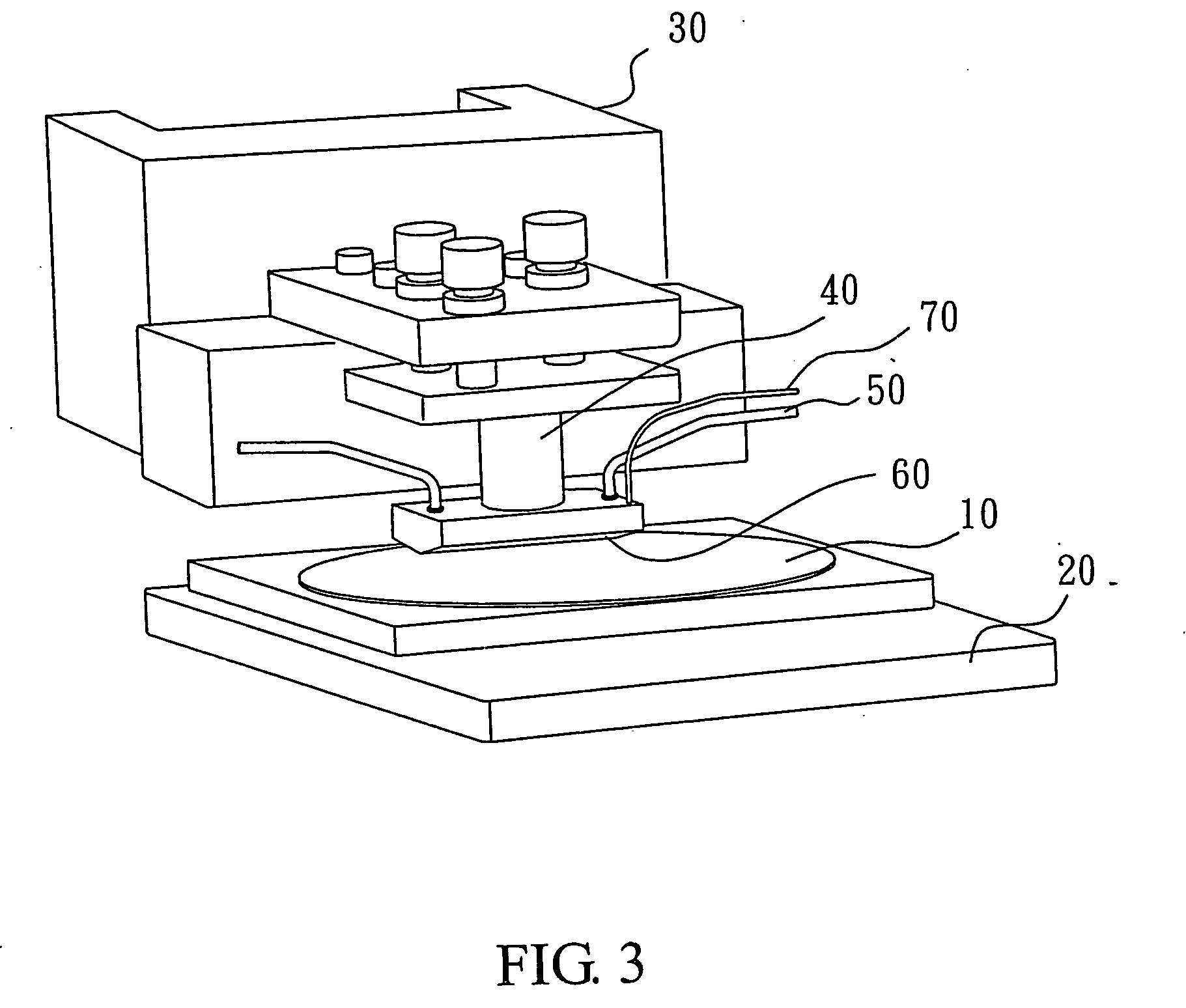Method and apparatus for controlling the length of a carbon nanotube
a carbon nanotube and length technology, applied in the direction of scanning probe techniques, manufacturing tools, instruments, etc., can solve the problems of carbon nanotubes, difficult positional control of catalyst particles, and the length of the tip extending, so as to improve the manufacture efficiency and quality of carbon nanotube sensors
- Summary
- Abstract
- Description
- Claims
- Application Information
AI Technical Summary
Benefits of technology
Problems solved by technology
Method used
Image
Examples
Embodiment Construction
[0020] The array of carbon nanotube probes used in the present invention employs the conventional microelectromechanical technology to form the microstructure thereof. Referring to FIG. 1, an array of probes 3 having carbon nanotubes 2 is formed on a p-type wafer, an n-type wafer, a glass substrate or the like substrate by chemical vapor deposition, plasma-enhanced chemical vapor deposition or field-enhanced chemical vapor deposition. In addition to the carbon nanotubes 2 grown on the end of the cantilever 6, they can be grown on a pyramidal-shaped tip 7 in appropriate embodiments, as shown in FIG. 2. The probes 3 are designed to form on the bottom 4 under a reference level 5. Also, the end of the carbon nanotubes 2 is designed to be grown within a distance from zero to several microns from the reference level 5 below, depending on the application of the probes. A groove-shaped structure is used to reduce the possibility of impact on and damage to the probe end caused by a dischargi...
PUM
| Property | Measurement | Unit |
|---|---|---|
| angle | aaaaa | aaaaa |
| voltage | aaaaa | aaaaa |
| microscopic angle | aaaaa | aaaaa |
Abstract
Description
Claims
Application Information
 Login to View More
Login to View More - R&D
- Intellectual Property
- Life Sciences
- Materials
- Tech Scout
- Unparalleled Data Quality
- Higher Quality Content
- 60% Fewer Hallucinations
Browse by: Latest US Patents, China's latest patents, Technical Efficacy Thesaurus, Application Domain, Technology Topic, Popular Technical Reports.
© 2025 PatSnap. All rights reserved.Legal|Privacy policy|Modern Slavery Act Transparency Statement|Sitemap|About US| Contact US: help@patsnap.com



